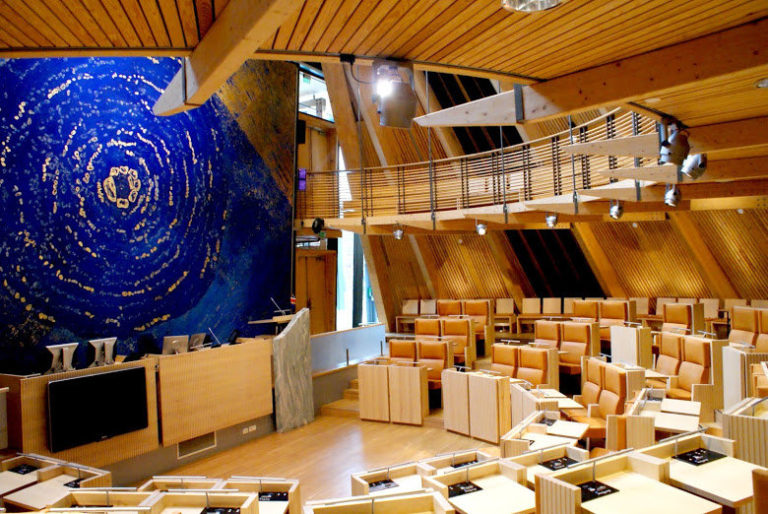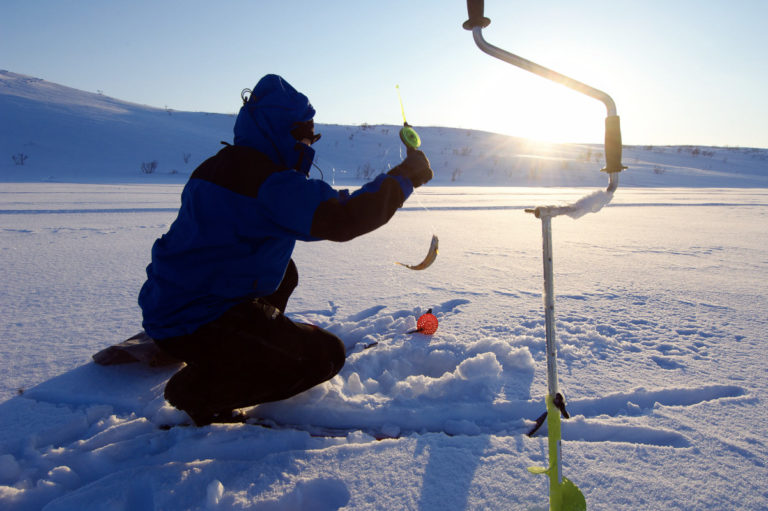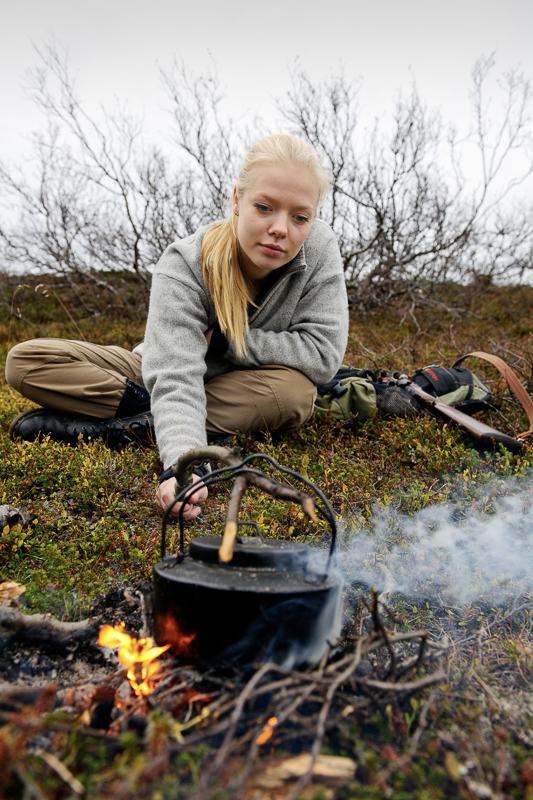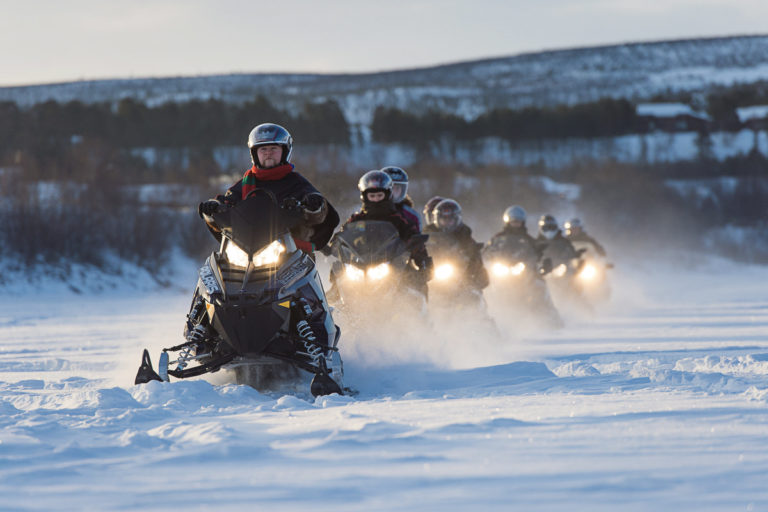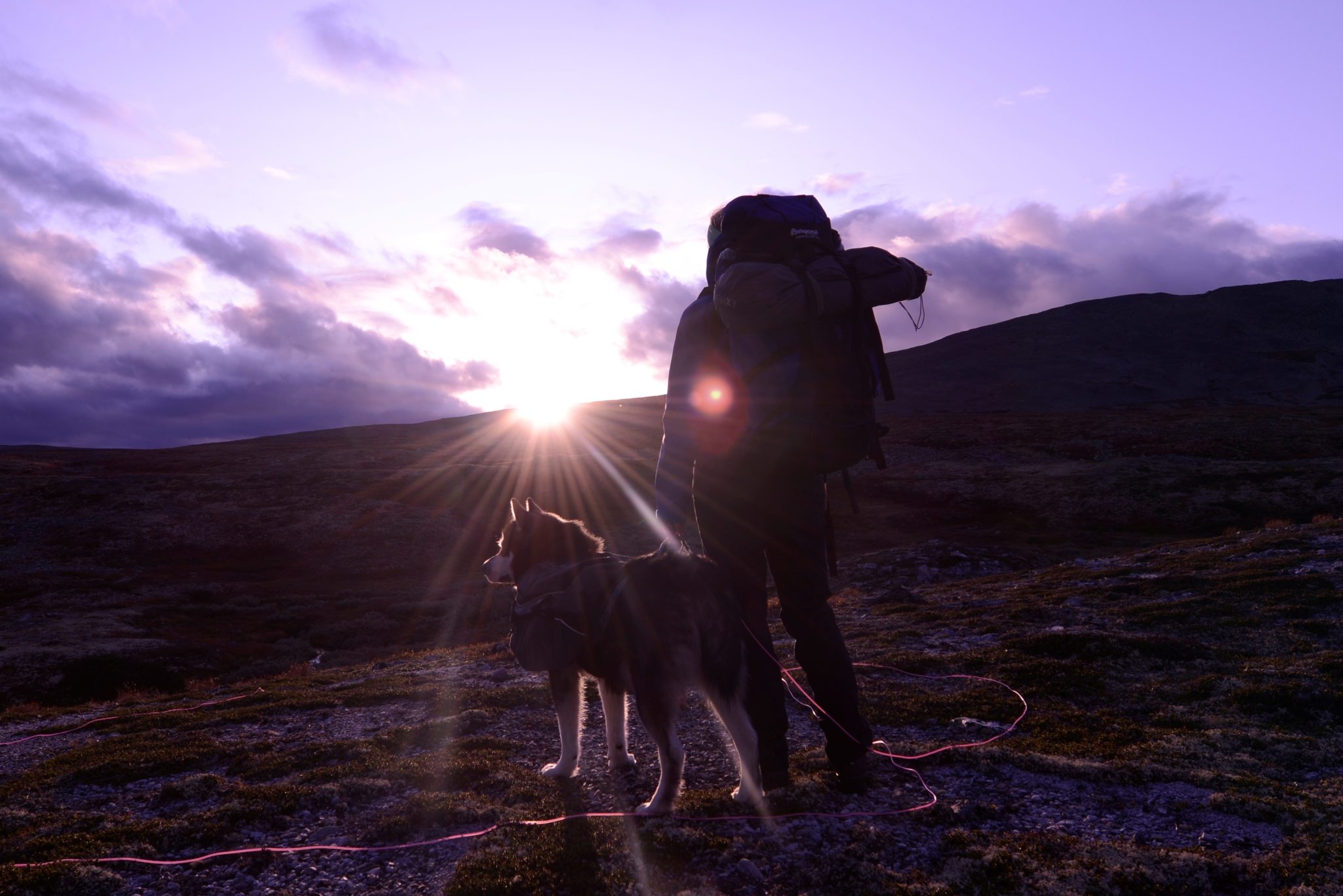The municipalities of Guovdageaidnu and Kárášjohka, Norwegian spelling, Kautokeino and Karasjok, are the most Sami of the communities in Norway. Here, the Sami language is spoken by almost everyone, and both age-old crafts and more contemporary cultural expressions live side by side in communities that are both traditional and modern at the same time. All is surrounded by the enormous Finnmarksvidda, the vast Finnmark Plateau, a wilderness that seems totally untouched. However, this is pastoral lands for reindeer herders, and as such a cultural landscape.
Kautokeino and Karasjok is the homeland of the Sami
Once, the Sami people lived all over Northern Scandinavia, most of Finland and the Kola Peninsula. In most areas, however, they have been assimilated or they live in small pockets surrounded by the majority populations. Maintaining the language and culture is an uphill struggle. However, in the Finnmarksvidda, the Finnmark Plateau, the Sami are still the vast majority of the population. Age old Sami handicrafts like cutting grass to fill up the winter shoes and making knives are still a part of everyday life, living side by side with Sami rap groups and cutting edge Sami artworks.
The Sami language is spoken my almost all
The Sami languages, which are of Uralic origin, are totally different from Norwegian In the two boroughs of, the Northern Sami language is being taught to children as a first language. In cafes and shops, it is the language of preference, and one can safely speak it when addressing the local authorities. The ATM allows you to withdraw cash in Sami. Guests, however, will have no trouble using English, as it is spoken by all except the most mature.
The endless plains cover all of Kautokeino and Karasjok
The Finnmark Plateau, or Finnmarksvidda, is flatter than most of Norway. But it’s not flat like a prairie, instead it consists of rolling hills, of low ridges created by the ice age glaciers, of marshland and countless lakes. Placid streams and rivers flow between the lakes, and drain into the Alta-Kautokeino river in the west and the Deatnu/Tana river in the east. Along the lower reaches of the Alta/Kautokeino river, there is birch forest, wheareas around Kárášjohka/Karasjok there are deep pine forests.
Reindeer herding is a mainstay for many in Kautokeino and Karasjok
The vast plains are the winter grazing land of the reindeer. Following instincts developed over millennia, the reindeer seek out the dry, cold inland areas because there is little snow there. Also, stable, cold temperatures make the snow fluffy and light. The reindeer can then easily dig down to the lichen growing underneath. However, come spring, the reindeer migrate to the coastal areas. Here there is fresh, green grass, on which they feed summer.
The nature is the larder
It’s not all about reindeer. Nature is abundant in the Finnmark plateau. The lakes are filled with fish, not only trout and char, but also whitefish, perch, pike and other Eastern species. The Deatnu/Tana River is famous for the salmon, some of which make it up to the Karasjok area. In late summer and autumn, the gold of the Finnmark Plateau, the cloudberries are ripe, and the tart, red lingonberries come in September. Hunting of grouse, geese, duck and other birds are also important for the locals.
The coldest winters in Norway are in Finnmarksvidda
The Finnmarksvidda climate is one of extremes in a country temperated by the Gulf Stream. In Winter, the coldest temperatures in the country have been measured here. On the first of January 1886, -51,4 degrees were measured in Karasjok. Tempeatures below -40 are measured most winters all over the Finnmark Plateau. Most winter days are less severe, though, with a dry cold that invites you out to do snowmobiling, skiing and dogsledding.
The climate in Kautokeino and Karasjok is ideal for the Northern Lights
The Aurora borealis, or Northern Lights, need clear skies to be visible for us. The Finnmarksvidda has a dry, stable climate with many clear nights. It is thus a very good place to see them. Light pollution is also very limited, as the human settlements are small and far between. Northern Lights hunters from nearby Alta drive up on the plateau when the conditions are difficult in Alta. In Karasjok, you can go snowshoing up to the Halde hilltop for a night-view of the Finnmarksvidda pleatau, with the added bonus of the Northern Lights.
Skiing is a late winter pleasure
In the bright months of spring, the snow is deep, the days are long, and the nightly frosts make a hard crust perfect for cross country skiing. This is the time for those long ski trips. The route between Alta and Karasjok follows an old route across the undulating hills, and you can stay in serviced cabins, fjellstuer, on the way. The more seasoned skiers of course find their own route to remoter areas, often combining skiing with ice fishing.
The Finnmarksvidda was made for dogsledding
Wide expanses of treeless plains and low hills invite to dogsledding. Noisy as the dogs are before departure, they go silent as they start running. You hear them breathing, otherwise you’re heading into untouched wilderness, going up and down through shrubland and white expanses. Go in the short days of the Polar Night, or use the long days in April for extended expeditions.
There is also a mild, sunny winter
In March and April, the force of the sun makes itself felt. The snow is still deep everywhere, and you can go skiing and snowshoeing, you can try your hand at snowmobiling and you can do dogsledding. Winter cold kicks back at night, though, with double-digit temperatures below.
Easter festivals celebrate white spring on Finnmarksvidda
Easter is a time to meet in the Finnmark Plateau. The late winter temperatures are around freezing point at daytime, the weather is stable and the spring migration of the reindeer hasn’t started yet. This was always the time to meet, have the children baptised, arrange weddings with hundreds of guests and to go to church. With time, this has developed into an Easter festival in both Kautokeino and Karasjok. It includes things like concerts and other cultural events, sport events like reindeer sledding competitions, lasso championships and snowmobile races and just plenty of getting together, meeting old friends and chatting. Use the chance to hear the latest rock bands in Sami. All in all, the Easter festivals are a manifestation of Sami culture, both the very traditional and the contemporary aspects.
Summers are short and warm on the Finnmark Plateau
In May, the snow melts rapidly, and all of a sudden, Summer is here. Sometimes, a sprinkle of snow comes in early June, but you can also experience sudden heatwaves of temperatures exceeding +25C, depending on the wind direction. In summer, some of the highest temperatures in the country can be measured in the Finnmark Plateau. The mosquitos are at their fiercest in July, and only the most efficient repellents keep them at bay. The locals know many tricks to avoid the problems.
In Summer, bike is the mean of transport
People who are used to hiking mountains, may find a hike on the plains here less entertaining. There is, however, a more speedy way of doing it; by bike. Old trails criss-cross the Finnmark Plateau, and you can either camp or stay in the fjellstuer, the cabins along the trails. Be ready to carry your bike across a stream and to rush over a bog. You don’t need to be an expert terrain biker, but a bit of shape and stamina helps.
Autumns are crisp and clear
Early August is the time when the gold of the plains, the delicious cloudberries, are ripe. Blueberries are also abundant. Autumn colours are, however, soon there. The heather takes on a high red colour, and the dwarf birches turn ochre. Before the first of September, the church of Kautokeino is surrounded by yellow birch trees. By mid September, the Finnmark Plateau has shed its colours, nights are frosty and both the air, the streams and the lakes are transparently clear. As autumn rains pour down elsewhere, the low sun shines over the hills and lakes.
The Sami parliament building is discreetly elegant
The Sami parliament in Kárášjohka/Karasjok has established the village as a Sami centre. The building itself is worth seeing; it melts seamlessly into the pine forests, yet has elegant, modern lines up close. Participate on a tour to learn about Sami politics and the position of the Sami within the state of Norway.
Sámiid Vuorká-Dávvirat or The Sami Collections, explain the Sami culture
A key to understand Sami culture is to visit the Sami collections. This is a classical museum, displaying the richness of the duodji, or Sami handicraft. Watch the difference between the strict geometry of the south and the fluid lines of the north. The pewter embroidery of the south differs markedly from the bead embroidery of the east; it’s all there for the curious observer. Also learn where to sit inside a Sami turf hut or tent, guests are seated next to the door, whereas the lord and lady of the house are at the oppsite end.
The Sami Galleri of Contemporary Art shows the latest in Sami art
The Sami Gallery of contemporary art is not stuck in the past. On the contrary, this is a very modern art institution, showing the latest in Sami and international art. The exhibits are daringly contemporary, and the ambitions programme is changing all the time.
The old church of Karasjok is a modest example of classicism
Karasjok has two churches; one modern one shaped like a lavvu, or Sami tent, and the old one. The old one was built in 1807, and was the only building to survive the destructions of World War II in Karasjok. Minuscule, it has an interior true to the ideals of classicism of its time.
The Juhls Silver Gallery presents traditional and modern silverware
The Juhls Silver Gallery is a monument to Frank and Regine Juhls’ life and work. Here, silver jewellery is made by hand for the Sami community. The Sami never made silverware themselves, but preferred to buy jewellery to suit their characteristic clothes. There is thus a particular Sami tradition, cherished at the Juhls Silver Gallery. A contrast to the traditional jewellery is the modern series made by Regine and Sunniva Juhls, with modern, simple lines inspired by the nature around the gallery.
The Kautokeino Local Museum tells the story of a special community
The little local museum in Kautokeino tells the story of a community that was isolated for a long time. In the sixties, a snowcat pulled a caravan of wagons across the wilderness to reach Kautokeino, there was no other way of getting here in winter. Skis, old photos, adornments from the old church burnt in 1944 by the withdrawing Germans, it’s all here.
Máze is the most Sami place on earth
The small village of Máze, spelled Masi in Norwegian, is 98% Sami speaking. No other community in the world is more Sami. This small community of some 350 people makes its living from reindeer herding and a little farming. Go there for a trip on the Alta-Kautokeino River and a stop at the old cemetery. The Alta Hydro Electric Power station was planned to be much bigger, and Máze was supposed to be under water. However, thanks to scaling down the project. Máze was saved.
About Kautokeino and Karasjok
The main settlement of Kautokeino is found on the southern side of the vast Finnmark Plateau – Finnmarsvidda, some two hours from Alta, and a short drive away from the Finnish border.
The little town of Karasjok is found on the eastern part of the Finnmarksvidda – Finnmark Plateau, as it descends into the boreal forests. It is found close to the Finnish border at Karigasniemi
Public transportation is actually scarce to Kautokeino. You can fly to Alta, and then there are a few buses a week to Kautokeino. Check the schedule at En Tur. Howver, with a car you can drive easily from the E6 in Alta and continue into Finland in the south or towards the E6 in Karasjok. There is also an airport in Enontekiö on the Finnish side.
Karasjok’s nearest airport is at Lakselv, 2 hours’ drive northwest. Travellers to the north, however, often use the airport at Alta, some 5 hours away, because of bigger access to discount tickets. There is a daily bus from Alta to Karasjok, with onward connections to the North Cape and Hammerfest. From Karasjok there are buses to Kirkenes and to Finland, at the Karigasniemi border crossing and onwards to Ivalo. From here, you can fly to Helsinki, or take the bus to Rovaniemi and the train to Helsinki.

Book activities and accommodation
The Book Finnmark website has a wide range of good addresses in the far north





